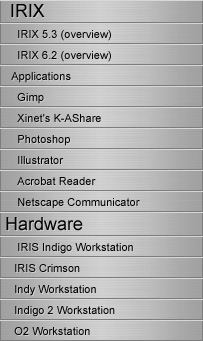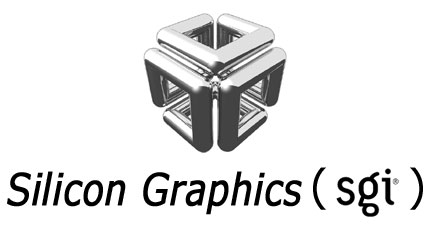


| There are few computers in the world that make the users feel honored to work on them... few being SGIs and Crays. SGIs hold legendary status even though there are many who have tried to play down what they have done for the industry. One of the more note worthy contributions from these systems was a special rendering library originally call IrisGL which SGI made into an industry standard now known as OpenGL. Even today many effects houses, scientific and engineering firms, and the US Government use SGIs for their high workstation and server needs. Over a period of time I hope to cover topics that should let anyone use an SGI as a replacement for a standard PC. Things like connecting to the internet via DSL or cable, connecting to a Palm, setting up printers and scanners, and applications like OpenOffice and AbiWord as Office replacements. IRIX 5.3 Last of the major releases of SGIs 32-bit operating systems, 5.3 is visually almost the same as any of the 6.x.x versions that would follow. Other then the lack of software written for it, IRIX 5.3 is a wonderful OS for older systems (Personal IRIS and the IRIS Indigo R3000) for making them productive workstations even today. IRIX 6.2 Based largely on the code from IRIX 5.3, 6.2 was the first major release of a 64-bit OS for SGIs 64-bit processor based computers (like the IRIS Indigo R4000, Indy and Indigo 2). IRIX 6.2, 6.3 and 6.4 were basically hardware specific versions of the same OS. All of this would lead to the hardware independant 6.5.x which is still shipping on all SGIs MIPS based systems today (I believe the current release is 6.5.17). Applications for IRIX One of the first questions I get when people find out that I have three SGIs is "what can you run on them?" To which I return: "Why, you can run applications on them." This page covers some of the more important apps (some of which are no longer in production) for making an SGIs a workable alternative to the standard PC that most everyone else is using. IRIS Indigo Workstation Mainly I'll be looking at the R3000 version (of which I have two) as they were SGIs first attempt to enter the desktop publishing market back in the early 90's. IRIS Crimson This was the deskside super workstation that was used for many of the high end tasks that were beyond what could be fit into a smaller box. My first experience with one was while at the National Science Foundation's Geometry Center working as a researcher. It was being use to render some incredible topology figures with photo realistic quality. Indy Workstation The first Indy I got to try was a demo unit that SGI loaned to the Geometry Center for a week. At that point I wasn't as impressed as I should have been. There wasn't much on it, and it wasn't part of the network. Years later I would use one for a RIP server and found while playing with it that it was a very impressive system. I've had mine for almost 4 years and still use it for all my video capture needs. Indigo 2 Workstation When first released it was a replacement for the IRIS Indigo R4000. It had the speed of an Indy with the expandability that had been missing from many of SGIs desktop workstation lines. Soon it became the primary workstation, able to be custom configured to the roles it needed to play. This system would end up being replace by the Octane. O2 Workstation The O2 was a replacement for the Indy. Able to meet the increasing abilities of the Indigo 2, the O2 had most of the same built in video abilities that made the Indy a wonderful system. The O2 is still widely used to day at place like Industrial Lighting and Magic. SGI has replace the O2 series with the new Fuel workstations. |